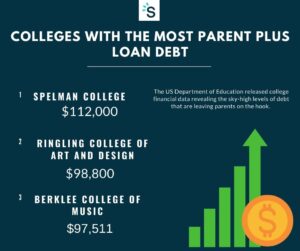
The Secret to Saving on Student Loans You Probably Aren’t Doing
Want to go to college but worried about student loan debt?
The student loan crisis is bigger than ever. Recent statistics show that Americans hold over 1.6 trillion in student loan debt, a number that continues to rise.
Yet, despite the debt that comes with college, more people are choosing to go than not. With advancements in technology and automation, many jobs that did not require a college degree are being phased out. You might find it harder to earn a living wage without having some college education under your belt. After all, college graduates earn, on average, 80% more than those with just a high school diploma.
So that means that while college is more expensive, it is still more important than ever before. But that puts you in a serious predicament. On one hand, you can risk getting into debt funding a college education. Or, you can miss out on the benefits (and pay) that come with a college degree. Luckily, there are plenty of ways to save on a college education.
Interested in saving money on college? See how Smarter with Achieve can help!
How CLEP exams can save you money on student loans
For many people, taking on part-time jobs and applying for college is one way to offset the cost of college and possible student debt, but there is another method you may not have heard of: CLEP.
CLEP isn’t the most talked-about way to reduce college costs, but it’s one you should seriously consider. CLEP exams can save you or your parents a lot on the cost of college, and thus student loans.
Here’s how it works…
CLEP (the College Level Examination Program) is a program by the College Board. Anyone of any age can study and take CLEP exams on over 30 subjects, and if they pass, receive college credits for that course.
CLEP exams are a lot like the AP exams you took in high school. The only difference is you can study at your own pace. With CLEP exams, you take your exam when you’re ready, not just at the end of the semester. You can take CLEP tests at over 2,000 testing centers nationwide. Plus, CLEP costs $85, so you can save thousands on college credits.
Who is CLEP for?
- CLEP exams are ideal for high schoolers due to their low cost and flexibility. High schoolers who take CLEP can expect to earn college credits before entering a university campus.
- Homeschoolers who are used to self-study can adapt incredibly well to CLEP
- Working students can take CLEP exams to work college around their busy schedules.
- Anyone who wants to save time and money on college.
Ready to get started with CLEP? See how Smarter with Achieve can help!
How much can I save with CLEP?
To illustrate the savings of taking CLEP exams as part of your college preparation, let’s look at in-state tuition at the Xavier University of Louisiana.
In-state tuition costs $1219.00 per course. A passing CLEP score can earn you 3-college credits. If you pass CLEP, you would only spend $112 on the exam (including testing site fees). That’s a savings of $1107 per course! Even if you have to retake a few exams, you’d still save tons of money on the cost of college.
Not only that, you’ll save on textbooks, room and board, and transportation for a whole semester, and maybe more!
Save on student loans with Smarter with Achieve.
Taking and passing CLEP exams is a great way to earn college credits, save money and avoid student loan debt.
Want to find out how many credits you can earn with CLEP at your specific school? Have our team identify all of the eligible courses, and while they’re at it, tell you how much it will cost to prep for each course using Smarter.


